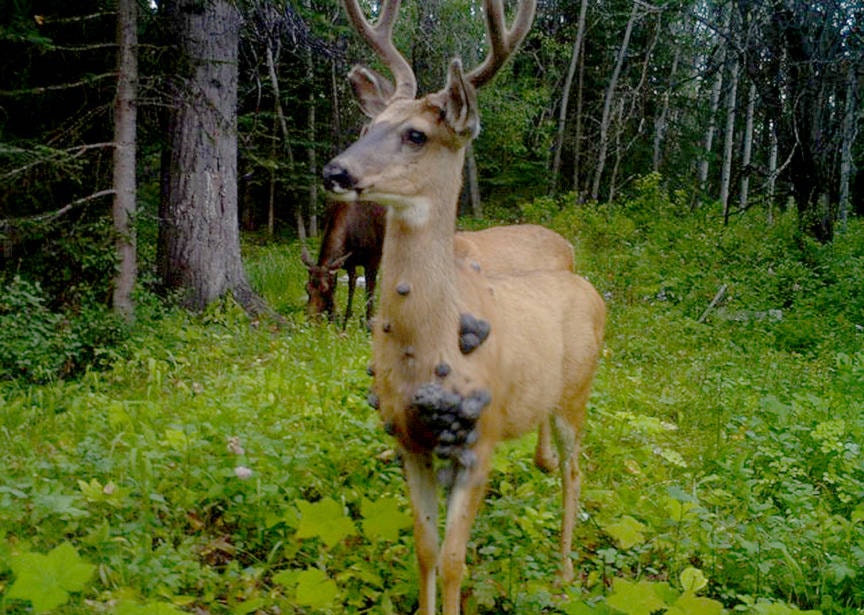A reader submitted a photo of a deer that was captured on their trail camera, with a possible case of fibromatosis or papillomas. Houston Today decided to take an in-depth look at this condition and make sure people know what to do when animals with such a condition are spotted.
“The deer in the photo appears to have a condition called Papillomas which are commonly referred to as warts. This condition is caused by a virus in the Papillomavirus group. This condition affects mammals and primarily members of the deer family,” confirmed the Conservation Officer, Jeff Palm.
Papillomas or warts in animals are caused by viruses similar to the ones that cause warts in humans. However, this condition is spread between animals by direct contact.
Palm also confirmed that papillomas are not transferable to humans.
According to a March 2017 guide from the government called “A Field Guide to Common Wildlife Diseases and Parasites in the Northwest Territories,” the animals that are affected by this condition are generally in a good body condition. This disease is mainly identified in moose, deer and caribou. Wolves and dogs could also be affected by this.
The guide also gives out instructions on the different measures to be taken in case you shoot a sick animal like not to cut into the diseased parts, washing hands, knives, clothes in hot, soapy water after cutting and skinning the animal, and report the wildlife disease to the conservation office.
The guide also suggests that it is safe to eat the meat of a deer or a moose infected with papillomas after trimming of parts containing the warts and a thoroughly cleaning the equipment.
Palm also confirmed that the meat is safe for consumption.
“Once the warts are trimmed away the meat is still safe for consumption,” he said.
He also said that sightings of deer and moose with warts are reported all through the Lakes District, every year.
“Usually only one or two reports a year and if diseased wildlife are located they are usually destroyed,” said Palm.
The need to destroy such infected animals arises mainly because of the communicable nature of the disease among animals. Although there isn’t a lot of information on how the disease is transmitted, it is believed that the virus takes hold through cuts and broken skin from another infected deer or moose. It is also suggested that certain insects could be responsible for the transmission of the disease.
In the case that you are to spot such an infected animal, it is important to call the local wildlife specialist for your area informing them of the infected animal.
Priyanka Ketkar
Multimedia journalist
@PriyankaKetkar
priyanka.ketkar@ldnews.net
Like us on Facebook and follows us on Twitter.
